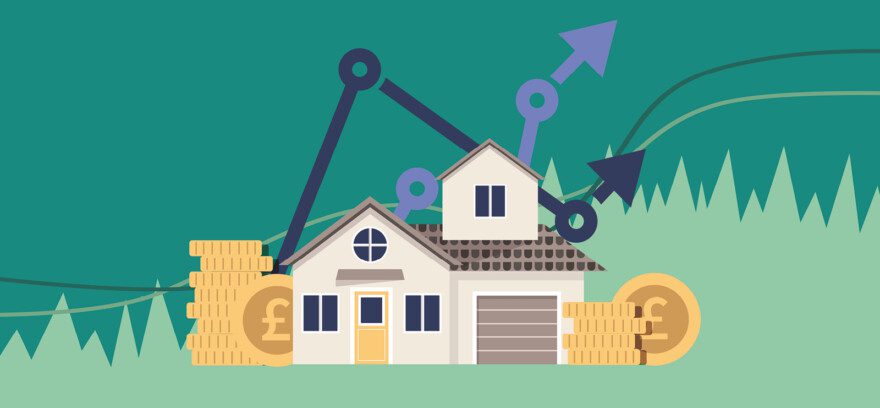UK markets rose again this week, with the FTSE 100 Index gaining 2.4% to trade at 7,860 points at the time of writing. UK GDP growth for January 2023 was upgraded to 0.4%, from 0.3% in the previous publication, the Office for National Statistics said on Thursday. Data showed Britain’s GDP stagnated in February, as notable fallers including services and production were offset by growth in construction.
The British economy ended the month 0.3% above the level of February 2020, before the first Covid-19 restrictions. Nevertheless, the UK’s recovery remains weaker than any other G7 economy. Chancellor of the Exchequer, Jeremy Hunt said ‘The economic outlook is looking brighter than expected’ and ‘we are set to avoid a recession thanks to the steps taken through a massive package of cost of living support for families and radical reforms to boost the jobs market and business investment’.
A growing proportion of UK lenders are seeing an increase in defaults on their loans to households and companies, as rising interest rates continue to squeeze borrowers, official data showed on Thursday.
Responding to the Bank of England’s credit conditions survey, a net 14% of banks and building societies said more households had defaulted on secured loans, such as mortgages, in the three months to the end of February compared with the previous quarter. The net balance was well above the negative 1.4% recorded in the previous three months to the end of November 2022, where the sub-zero value pointed to a decrease in the default rate.
Britain’s Chancellor said that his government needed to look at raising the level of protection for bank customers, given the speed at which deposits fled Silicon Valley Bank last month.
Commodity markets
In commodity markets, Brent Crude futures traded around $86 per barrel on Friday, benefiting from a general dollar weakness on a US inflation report and concerns over tight supplies. Shipments from Russia have fallen after Moscow vowed to reduce production, while pipeline flows from Iraq’s semi-autonomous Kurdistan region remain halted.
In its latest monthly report, OPEC left its world oil demand growth estimates unchanged at 2.3 million barrels per day, but warned that the usual additional seasonal demand from the US could be hit by any weakening in the economy due to high interest rates. Meanwhile, the cartel noticed the recent reopening of China has still not been sufficient to reverse the declining trend in global refinery intakes, despite the latest data showing China shipped the most oil in almost three years in March.
Gold traded around $2,035 an ounce on Friday, the highest since March 2022, as growing fears of a recession supported safe-haven buying. Meanwhile, the US dollar weakened to around its lowest level since early February as investors continued to digest the latest US inflation report.
Equity markets
US equity futures traded lower on Friday as investors looked ahead to the start of the corporate earnings season, with major banks set to report later in the day. In Thursday’s regular trading session The Dow Jones Industrial Average rose 1.14%, while the S&P 500 Index gained 1.33% and the Nasdaq Composite rallied 1.99%.
US inflation eased last month to its lowest level in nearly two years, but an uptick in core prices will keep pressure on the Federal Reserve to press ahead with another interest rate increase in May. The US consumer price index for March rose by 5% year-on-year, according to data published by the Bureau of Labor Statistics on Wednesday. The figure marks a significant deceleration compared with the 6% recorded in February, as well as the lowest level since May 2021.
However, core CPI, which strips out volatile energy and food costs, rose by 5.6% year-on-year following a 0.4% monthly jump, suggesting that price pressures for some goods and services remain elevated. The latest inflation data is one of the most important economic releases ahead of the Federal Reserve’s next policy meeting in early May.
Following the CPI report, a softer producer price index, which gauges the prices received for final demand products, fell 0.5% over the previous month in March, while analysts expected a flat reading. So far, there doesn’t yet appear to be a consensus on whether another quarter point rate rise is necessary before the central bank can bring to an end its historically aggressive monetary policy campaign to battle high inflation. Last month, most officials backed an additional increase and no cuts are forecast until 2024.
The information provided in this communication is not advice or a personal recommendation, and you should not make any investment decisions on the basis of it. If you are unsure of whether an investment is right for you, please seek advice. If you choose to invest, your capital may be at risk and the value of an investment may fall as well as rise in value, so you could get back less than you originally invested.
